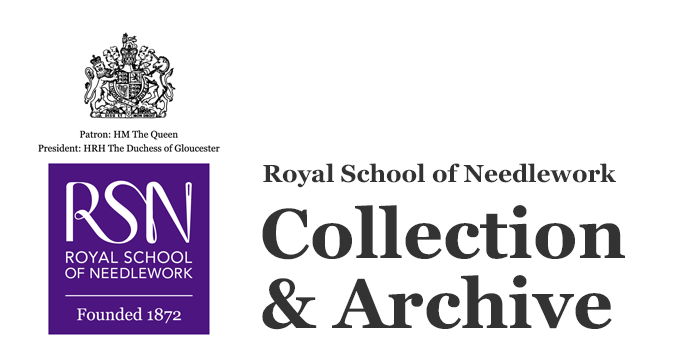Slippers
Object name
Date made
Circa 1920s
Place made
Description
Heavily embroidered early 20th-century Peranakan slippers featuring detailed human and animal designs.
Content description
20th-century Peranakan slippers with embroidered toes and red dyed leather soles. The slippers have two thick dyed red leather soles, presumably nailed together. They are closed at the toe where they have been heavily embroidered in metal and coloured threads. The metal threads are purl, bullion, and passing. The central design features what appears to be a male figure embroidered in silk thread in colours of bright purple, blue, orange, white, and yellow. Burden stitches have been used to depict his clothing while skilfully rendered satin stitch is used for the face and hands. He is holding a small pink embroidered rabbit and flanking him are two further embroidered rabbits. One is shaded in pale blue, the other in shades of pale pink. Burden stitch has again been used for their bodies and satin stitch for their ears and faces. It is unknown if the man is wearing a large headdress or whether the orange and yellow embroidery which surrounds his head is simply his hair. There is a flower, perhaps a lotus, on each side of the figure. One is purple and the other bright orange. Surrounding the man, rabbit, and flowers are metal threads which have been couched down using the bricking technique. Floral and leaf-like shapes surround the outer edges of the slipper. The centre of these floral motifs has been rendered using basketweave, which has then been surrounded with S-ing. Stems with tiny veins radiate out from the floral shape, rendered in cutwork and likely using bright check. Each slipper top is bordered in royal blue silk and the embroidery itself is worked on red, yellow, green, and blue velvet. The intricate and densely worked embroidery would have taken great skill.
Peranakan slippers are known as 'Good Luck Slippers' and were given as gifts for good luck on special occasions such as birthdays and New Year. These embroidered slippers are also called kasut sulam and were made by nyonya, Peranakan women. Beadwork slippers replaced embroidered slippers in popularity in the 1930s. Embroidered slippers such as this pair were often worn by Peranakan men during their wedding celebrations. It is possible that these slippers are from the late 1920s. The trio of rabbits embroidered on each shoe brings to mind the Lunar New Year and the inclusion of the rabbit in the zodiac. 1927 was the Year of the Rabbit, so it is possible that these slippers were made in that year. It is also possible that, if these slippers were tied to nuptials, rabbits were depicted simply because they were symbols of good luck and fortune.
The Peranakans are an ethnic group who descended from the first waves of Southern Chinese settlers to parts of Malaysia, Indonesia, and Singapore. Peranakan culture is characterised by a blending together of ancient Chinese culture with these local cultures. Today, the word Peranakan is used in Malaysia, Indonesia, and Singapore to refer to someone with local and foreign ancestry.
Peranakan slippers are known as 'Good Luck Slippers' and were given as gifts for good luck on special occasions such as birthdays and New Year. These embroidered slippers are also called kasut sulam and were made by nyonya, Peranakan women. Beadwork slippers replaced embroidered slippers in popularity in the 1930s. Embroidered slippers such as this pair were often worn by Peranakan men during their wedding celebrations. It is possible that these slippers are from the late 1920s. The trio of rabbits embroidered on each shoe brings to mind the Lunar New Year and the inclusion of the rabbit in the zodiac. 1927 was the Year of the Rabbit, so it is possible that these slippers were made in that year. It is also possible that, if these slippers were tied to nuptials, rabbits were depicted simply because they were symbols of good luck and fortune.
The Peranakans are an ethnic group who descended from the first waves of Southern Chinese settlers to parts of Malaysia, Indonesia, and Singapore. Peranakan culture is characterised by a blending together of ancient Chinese culture with these local cultures. Today, the word Peranakan is used in Malaysia, Indonesia, and Singapore to refer to someone with local and foreign ancestry.
Dimensions
width: 10.5cm
length: 26.5cm
width: 10.5cm
length: 26.5cm
length: 26.5cm
width: 10.5cm
length: 26.5cm
Materials
Stitches
Basketweave (goldwork) 
Bricking
Burden stitch
Couching
Laid work
S-ing (goldwork)
Satin stitch
Flat cutwork (goldwork)

Bricking

Burden stitch

Couching

Laid work

S-ing (goldwork)

Satin stitch

Flat cutwork (goldwork)

Techniques
Motifs
Catalogue number
COL.31.a-b
Other numbers
RSN 220
© Royal School of Needlework
